What is masago?

Sure! Here’s a rewritten version of the text:
So, you’re eager to enhance your sushi-eating experience. This traditional Japanese practice emphasizes elegance and finesse, making masago an excellent complement to various rolls. But it’s not just any type of roe.
"Masago is derived from capelin (Mallotus villosus), a species of smelt fish," shares Jacobo Lopez Ramirez, the head sushi chef at Uchiko Austin. "These fish are often served fried or grilled whole. In Japan, smelt that contain roe are particularly valued and referred to as komochi shishamo." Traditionally, enjoying masago meant consuming it with the fish, as keeping the eggs fresh posed a challenge. However, he notes that the recent advent of medical-grade freezers in the culinary world has allowed chefs to access masago independently, as it can now "be processed and stored during peak spawning season."
According to Rik Keijzer from the School of Sushi, capelin are "found in the frigid waters of the North Atlantic Ocean, particularly around Norway and Iceland." A similar species is also harvested in the Pacific. These fish are sustainably sourced, and their eggs are meticulously collected. Therefore, you can generally feel confident when purchasing and enjoying masago.
A brief history of masago
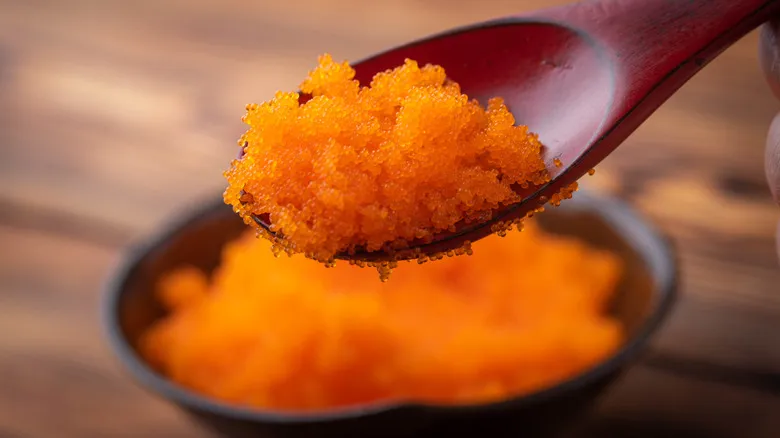
Traditional sushi centers around the delightful, sweet, vinegared rice, which is meant to take center stage. This explains why sushi rice is sticky and why pre-packaged sushi from grocery stores often falls short. In contrast to the Americanized versions that emphasize the flavors of fish, vegetables, and sauces, sushi found in more traditional settings prioritizes expertly crafted rice paired with subtle accompaniments. Masago, or fish roe, is a perfect example of this.
"This roe has been a delicacy in Japan and other Asian nations for centuries," explains Rik Keijzer. "The term 'masago' translates to 'sand' in Japanese, as the eggs resemble tiny grains of sand." Today, its rich flavor has made it immensely popular in sushi restaurants worldwide.
"Although it may not have the same prestigious history as caviar," notes James Callery, head chef at Cross Keys Newbury, "masago has been embraced in Japanese cuisine as a playful way to enhance flavor and texture in sushi. It's been 'popping' up in sushi bars around the globe for very good reasons."
What's in a name: Masago vs caviar
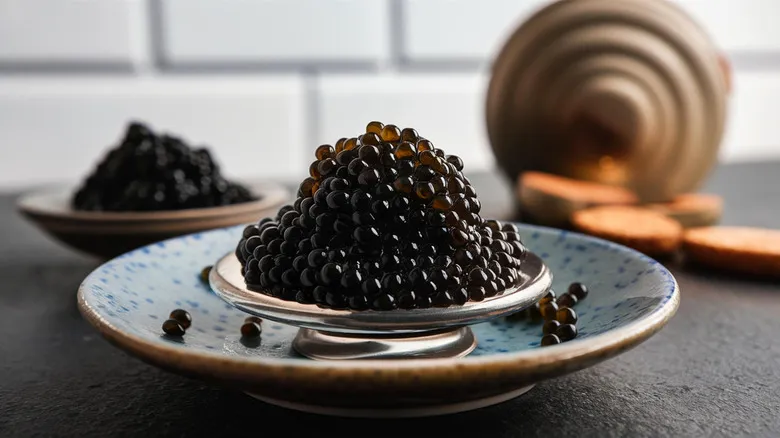
If caviar isn't the same as masago, then what exactly is it? To clarify further, many people question whether fish eggs and roe are distinct — the answer is no, not really, although roe specifically refers to fully ripe and unfertilized fish eggs. Caviar, on the other hand, is sourced from sturgeon (family Acipenseridae) rather than capelin.
"While both are types of fish roe, they are fundamentally different products with different uses," explains Rik Keijzer. "Caviar is regarded as a luxury item due to its scarcity and the intricate harvesting techniques required, which makes it quite pricey. In contrast, masago is significantly more affordable." He notes that their differences extend beyond price, encompassing flavor, size, and texture as well. Masago is soft and salty, while caviar is creamy, buttery, and a bit brinier, with larger eggs than masago. "It's akin to comparing a cozy bed-and-breakfast to a five-star hotel," adds James Callery. "Masago is more budget-friendly and has a milder, less briny flavor."
Japanese cuisine also features various types of roe. "Ikura, another well-known fish egg often found in sushi, comes from salmon (family Salmonidae)," says Jarren San Jose of The Sushi Geek. "Masago lacks the same pop as caviar and ikura." Tobiko, another type of roe, is derived from flying fish (family Exocoetidae) and is larger than masago but smaller than ikura.
The flavor of masago

Masago tends to be somewhat limited in its flavor profile, primarily offering a briny taste without much variation. In contrast to the buttery richness of caviar and the sweetness of ikura, masago presents a subtly sweet essence of the ocean. While it works beautifully as a garnish, indulging in a generous scoop on a cracker might leave you wanting more, unlike caviar.
However, for those who find the flavors of tobiko and caviar a bit too intense, Rik Keijzer suggests that masago can serve as a pleasant alternative. James Callery concurs, noting that when used to enhance other dishes, "It provides just the right touch of flavor without overshadowing other ingredients. Consider it a charming 'seasoning from the sea' rather than an overwhelming burst of saltiness." Additionally, Jacobo Lopez Ramirez mentions that masago can also be found with added flavors, such as wasabi.
It's a texture thing
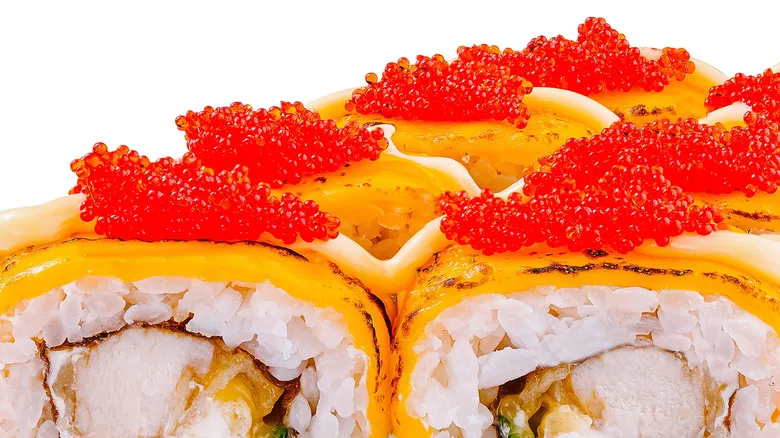
True to its name, which translates to "sand," masago has a unique texture. Unlike other fish roe that can be felt on the palate and burst with a satisfying pop, masago is so small that it doesn't create that sensation. Instead, it has a slightly gritty feel, but its briny flavor offers a delightful experience. Many people describe it as crunchy, adding a nice contrast to other sushi components that are typically softer. For those who enjoy a bit of bite, masago is a treat.
Additionally, since masago is often used as a garnish, you won't experience that gritty mouthful reminiscent of childhood beach days (after all, if your brother didn't want his shorts pulled down, he shouldn't have tossed sand at you). Instead, it adds a pleasant texture on top of sushi rolls or other dishes.
Masago color: What's the deal?
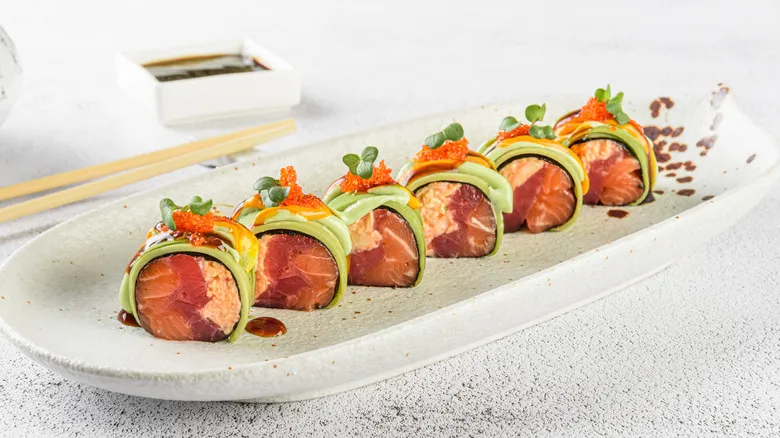
If you've ever been puzzled by the wide variety of roe known as masago, you're not alone. And you're not losing your mind over it, either. The reality is that masago is frequently colored to achieve a particular look. "Similar to tobiko," Rik Keijzer explains, "masago comes in a range of colors, including the traditional orange, red, green (wasabi), and black. As a sushi chef, I think it's fantastic for adding diversity to various sushi dishes, and let's face it: all those vibrant colors on a sushi plate are simply stunning!"
However, Jarren San Jose notes that the natural color of masago is actually a pale yellow. If you come across a store or brand selling masago in any other color and claiming it's undyed, it's wise to be cautious and consider other options. While the dye may not significantly impact the taste, informed consumers make the best choices.
Where to buy good masago

When preparing your own sushi, it's essential to select the finest ingredients, particularly when paired with fresh rice, fish, and vegetables. In a dish as intricate as sushi, even a minor flaw in one component can compromise the entire creation. Fortunately, high-quality masago is relatively easy to find.
"Masago can be found at most Asian grocery stores and specialized fish markets," says Rik Keijzer. "It's often available in large containers in the freezer aisle." Additionally, Jacobo Lopez Ramirez notes that you might discover it in the caviar section of certain specialty stores. If you're unable to locate it locally, you can also purchase it online. For example, Amazon offers Capelin Roe Red Sushi Caviar in 4-ounce packages for around $26.
It's crucial to ensure that you also buy sushi-grade fish when sourcing top-notch ingredients for your sushi. This fish is usually flash-frozen at sea to eliminate parasites and maintain its moisture, flavor, and freshness. Ideally, you should use fresh fish on the same day you purchase it, but the United States Department of Agriculture states that it can be stored in the refrigerator for up to 2 days, as long as the fridge is set to 40°F or lower. If you don't plan to use it within that timeframe, wrap it tightly in plastic and place it in the freezer until you're ready to use it.
Vegan masago? It's a thing

While masago is perfectly suitable for meat-eaters and pescatarians, it isn't the best choice for vegetarians or vegans. The good news is that if you fall into that category, you can still enjoy sushi without missing out. A new product called Tosago is making it possible for plant-based eaters to top their rolls with style.
Tosago is a vibrant, colorful alternative to both masago and tobiko, crafted from seaweed and nearly indistinguishable from the real thing. Although it is dyed like traditional masago, the color comes from natural dyes that won't transfer to your food. Additionally, it boasts an impressive shelf life of 18 months at room temperature when unopened, and it can be stored in the fridge for a month after opening. This could be a fantastic addition to your next cucumber avocado roll.
How to choose masago correctly
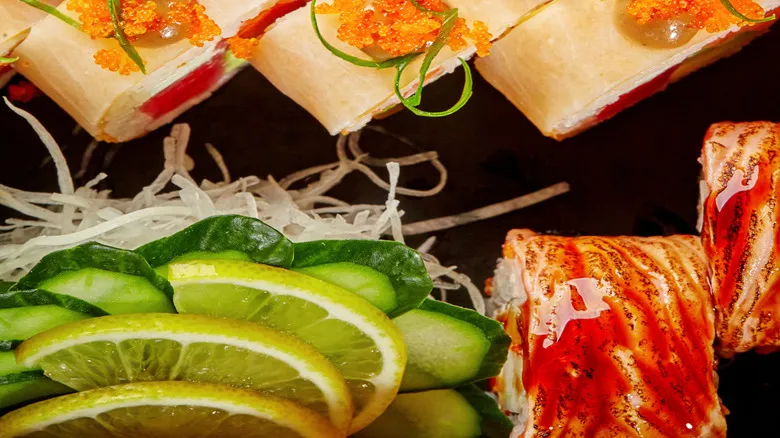
Be sure to select high-quality masago. While it can be used sparingly as a light and colorful garnish on various dishes, some sushi recipes require a generous layer of roe to cover the entire exterior of a roll. In such cases, it's essential to choose the best product for both aesthetic and taste reasons.
"Look for bright, vibrant hues and avoid any that appear dull or emit a strong fishy odor," advises James Callery. "Fresh masago should have a scent reminiscent of the ocean, not like it's been sitting on a dock for a week. If you're uncertain, consult the fishmonger; they'll be able to tell you if it's 'the catch of the day' or just yesterday's leftovers." Rik Keijzer emphasizes the importance of "always checking the expiration date and, if possible, asking about its source to ensure it is sustainably harvested. Freshness is crucial, as older masago loses its crunch and flavor, which you definitely want to avoid."
If the eggs appear dull, brown, shriveled, or otherwise unappealing, don't select those. Similarly, if you notice any of these qualities at a sushi restaurant, it's best to skip the masago. Additionally, avoid any that look like a single clump; you should be able to see individual eggs. According to Jarren San Jose, "Masago is typically in season from late spring to early summer, but it is often frozen to be available throughout the year." If you're storing it this way, make sure to place it in the freezer or refrigerator as soon as you get home.
Using masago in Japanese food
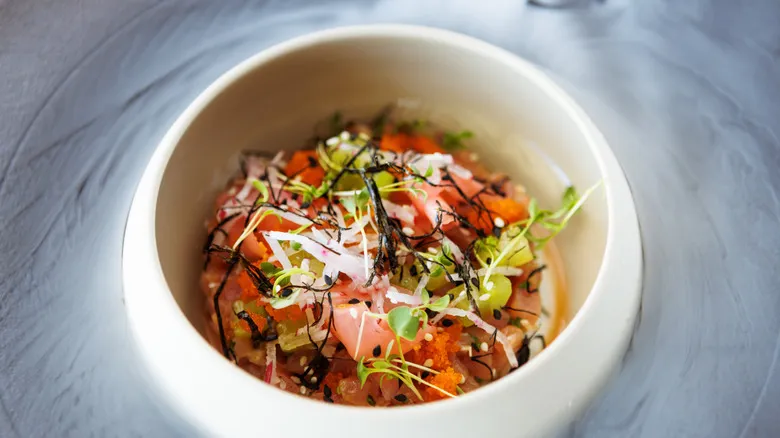
Now, let's dive into the exciting ways to incorporate masago into Japanese cuisine. While it's common to use it as a topping for rolls or to embellish hand rolls (temaki), Jacobo Lopez Ramirez suggests that this limits its potential. "Masago can enhance the texture of spicy tuna blends or mayonnaise-based sauces. I enjoy adding it to seaweed salads. It can also be served as a sushi bite; gunkan-style sushi forms a small cup with a strip of seaweed." James Callery recommends trying it on tuna or crab salad rolls as well.
If you love spicy mayo with your sushi, you'll appreciate Rik Keijzer's approach of blending orange or red masago into his sriracha mayonnaise. "The heat from the Sriracha combined with the creaminess of sweet Kewpie Japanese mayonnaise creates a delightful balance with the light, salty 'pop' of the masago. This sauce is a must-try on tempura shrimp rolls or spicy tuna rolls."
It's worth mentioning that while masago is frequently found on sushi rolls and can be a delightful addition to sashimi (slices of raw fish), it's less common to see it on nigiri (slices of raw fish served atop a small mound of sushi rice). However, Jarren San Jose points out, "Ikura fish eggs are more commonly found in nigiri or at omakase."
Beyond the sushi (and beyond the masago)
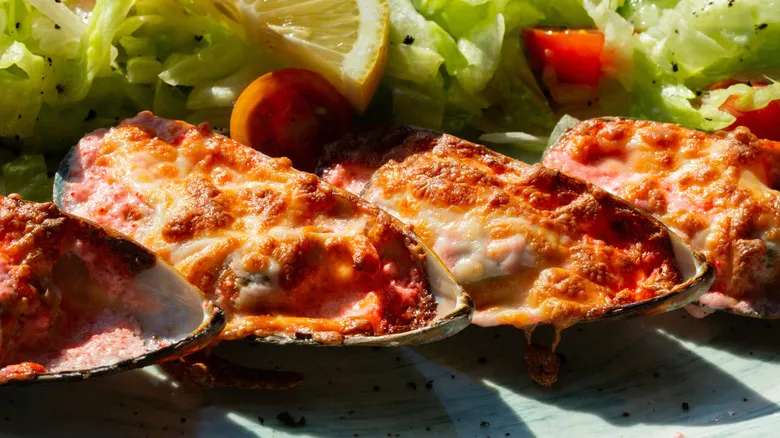
You don't have to limit your use of masago to just sushi. It's a fantastic addition to baked mussels, where it can be sprinkled on top along with a blend of mayo, sriracha, soy sauce, and lemon juice. Feel free to use masago in any color to bring some flair and a delightful crunch to your next poke bowl. Thinking about adding masago to noodles? Absolutely! It pairs wonderfully with creamy udon noodles.
It's also important to mention that there are many other types of roe you can try, so you might want to explore beyond masago in the future. For example, Ina Garten garnishes her deviled eggs with salmon roe. And you probably already know that caviar, whether it's budget-friendly or high-end, is a well-loved topping for everything from crackers to salmon canapés. Other popular varieties enjoyed worldwide include trout, paddlefish, and bowfin roe. If you're ready to start experimenting with fish eggs, don't hesitate to give these a try!
A beginner's guide: Getting started with masago

Are you ready to experiment with masago in the kitchen? There's just one catch: new ingredients can be intimidating, without fail. The reason behind this is a mystery of home cooking that no one can quite explain. Fortunately, Jacobo Lopez Ramirez highlights that "Masago is perfect for beginners because it's affordable and widely accessible." This means you don't have to stress too much about making mistakes.
Experts agree that starting with small amounts is the best way to familiarize yourself with its flavor and how it complements other ingredients. James Callery suggests, "Use masago as a topping for simple sushi rolls or just sprinkle it over a bowl of rice with cucumber and avocado. If rolling sushi feels like trying to fold origami with rice, opt for a deconstructed sushi bowl instead. You get all the flavors without the stress of rolling." Chef Callery, you understand the struggle.
Moreover, Rik Keijzer points out that you can gradually incorporate it into more intricate rolls, stating, "As you gain experience, you'll learn which types of sushi benefit from these tiny salty fish eggs and which do not." Jarren San Jose adds that you can search for recipes that include masago in sauces and pasta. "You'll often find masago as a garnish on various seafood dishes," he notes, but he also warns to use it sparingly, as it can easily make your dish too salty.
Storing masago for longer-lasting goodness

Storing masago is straightforward, but there are some guidelines to follow. According to Jacobo Lopez Ramirez, "Masago should remain frozen until you're ready to eat it. Once thawed, store it in an airtight container." It's important to remember that you shouldn't refreeze it after thawing, as this can compromise its quality. However, if you purchase it fresh, you can place it in the freezer. Rik Keijzer advises, "If you don't use it all at once, you can freeze it; just be sure to portion it into smaller amounts so you only defrost what you need."
When you're prepared to use it, James Callery recommends thawing it in the refrigerator overnight. He warns, "Avoid microwaving unless you want to learn what not to do with masago." Whether it's been thawed or bought fresh, always keep it refrigerated unless you're actively using it. Ensure it's well covered, which should be simple since most commercially available brands come with a secure lid.
Masago nutritional information
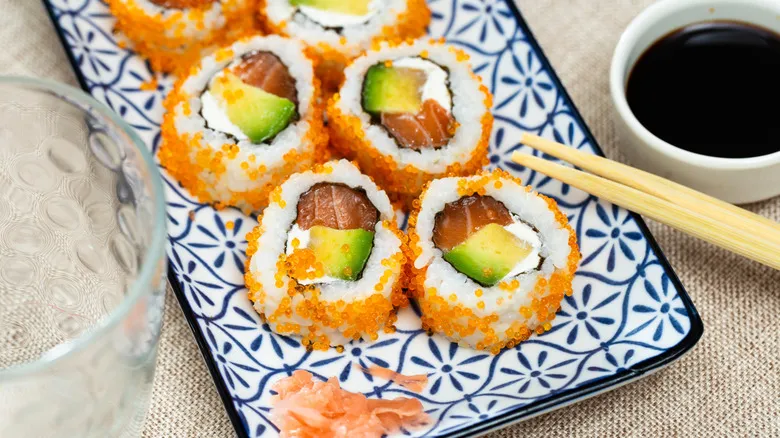
When it comes to nutritious food, masago is a great choice. Just one ounce of this roe has 40 calories, along with 2 grams of fat and 6 grams of protein. While an ounce may seem like a lot to consume at once, it actually results in fewer calories overall. This also means lower amounts of fat and protein, but masago is often enjoyed with fish and other protein-rich foods, so there's no need to be concerned about that.
In terms of nutrients, masago is quite impressive. It provides significant amounts of Vitamins C, E, B2, B12, and B9, as well as phosphorus and selenium. Vitamin B12 is particularly crucial, as it is an essential vitamin that your body cannot produce on its own and must obtain from food or supplements. Additionally, masago is a source of omega-3 fatty acids, which are beneficial for heart and eye health and may even help alleviate arthritis symptoms.
Recommended
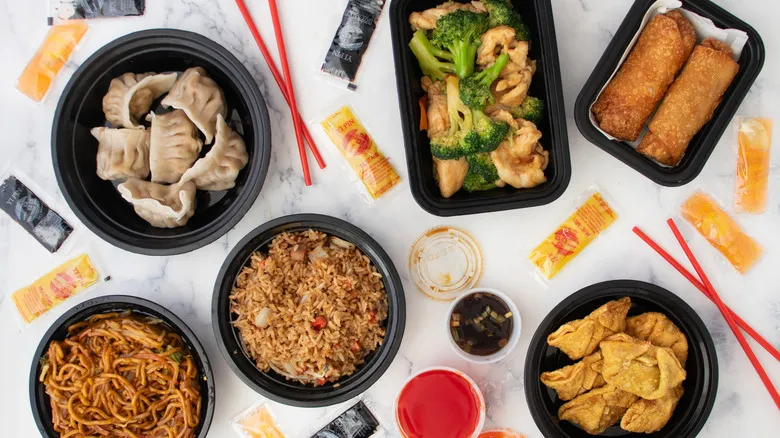
How To Reheat Chinese Food For First-Bite Flavor

How To Clean Your Pizza Stone Without Ruining It

The Easy Way To Remove The Tendon From Raw Chicken
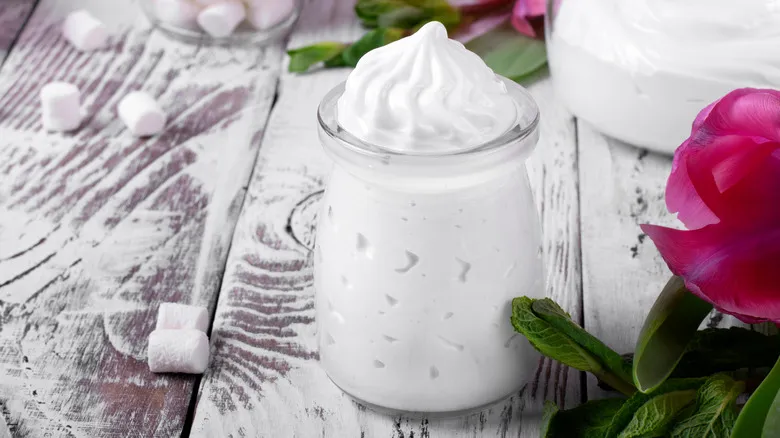
The Only 2 Ingredients You Need For Easy Marshmallow Fluff
Next up

